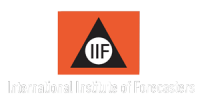On Demand Webinar
Bridging the Gap Between Forecasting Theory and Practice


About the webinar
It has long been recognized that the real-life practice of forecasting falls well short of the potential exhibited in academic research and forecasting competitions. In 2018’s M4 competition, a simple benchmark combination method reduced error by 17.9% compared to a naïve (“no change”) forecast. The top six performing methods in M4 further reduced error by over 5% compared to the benchmark. But in forecasting practice, just bettering the accuracy of a naïve forecast has proven to be a surprising challenge.
Join experts from CT Global Solutions and SAS, in association with Foresight: The International Journal of Applied Forecasting, as they discuss reasons why forecasting practice falls short of theory, and ways to bridge the gap:
- Forecasting can be a politicized process, with biases and personal agendas of process participants contaminating results.
- New machine learning approaches can augment the demand planner by guiding forecast overrides to improve FVA.
- Causal variables can improve forecast models, but selecting the best variables can be difficult and time consuming.
- In the absence of state of the art next generation machine learning and artificial intelligence, many companies are unable to cope with the volume of forecasts and high level of effort required
Have a SAS profile? To complete this form automatically Sign In